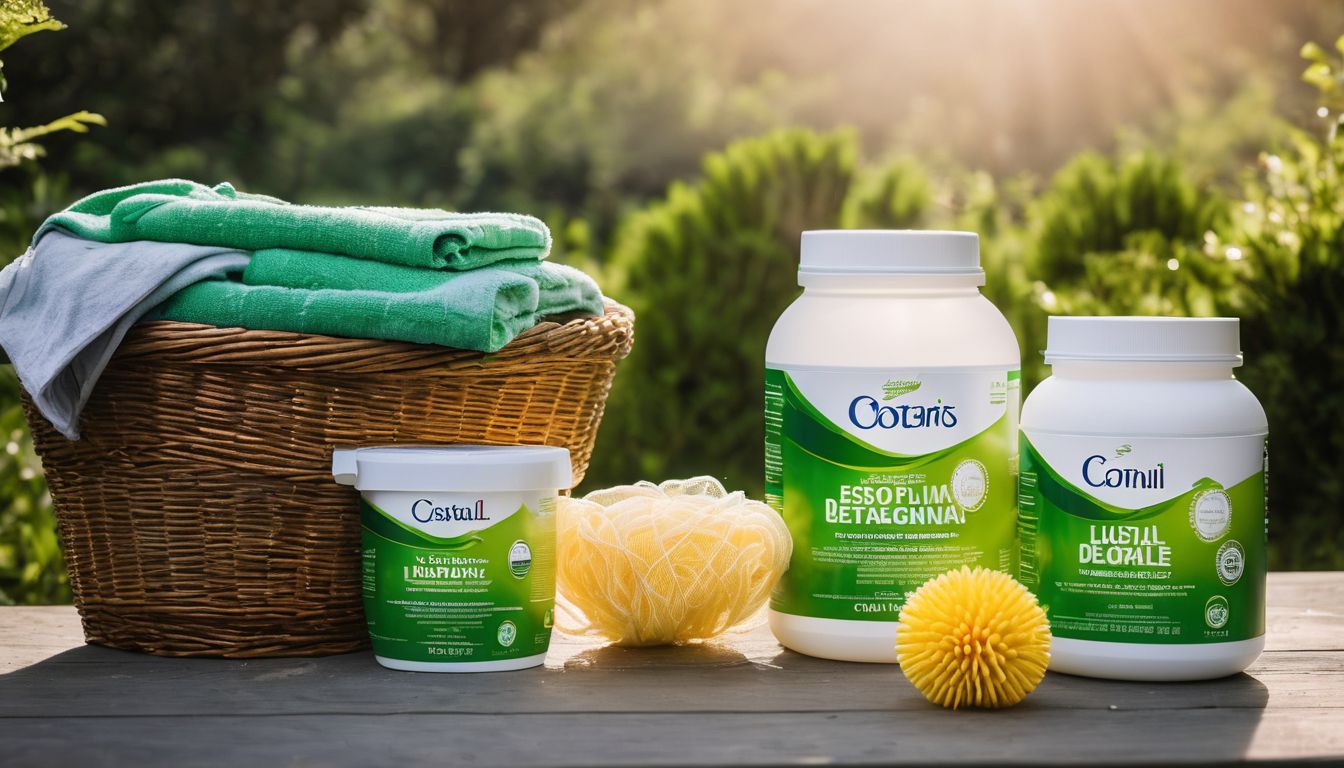Tis’ the season for fleas! The warmer months of the year can be a bittersweet time if you have pets. As much as you and your pet may love the longer, warmer days outside, it often comes with some discomfort. Fleas love the spring and summer and their abundance during the warmer months may cause a lot of itching and stress. They thrive in 70-degree weather and can breed in your house or outside in your yard. Because of their life cycle, trying to control a flea infestation can feel like a full time job. Even if you manage to get the fleas off of you and your pet, their eggs and larvae may still be lurking, waiting to hatch, in hard to reach places. There are many chemical products on the market—powders, spot treatments, foggers, etc.—but they are not very safe for you or your pet and often times the fleas have grown resilient to these methods. The best solution is to take a holistic approach to flea control and fight nature with nature.
BENEFITS for You, Your Pet, and the Environment: Most over-the-counter flea control products contain an absurd amount of toxins. When you read the warning labels, such as “Hazardous to Humans and Domestic Animals,” “Toxic to Cats or Fish,” “ Harmful if Ingested,” it is safe to say that these toxins will also end up in our natural environment. Many of the insecticides in these products, including allethrin, carbaryl, fipronil, etc, can end up in our air, groundwater, and soil, or even worse-ingested by you or your pet. The US EPA, among other organizations, has noted that these insecticides are toxic to birds, fish, bees, and extremely dangerous if ingested by animals or humans.1 An animal cleaning their coat after an application of flea powder or spot treatment, a treated animal rolling around in the yard, an animal brushing against a cat or other creature, or an animal bathed after a treatment are all simple toxic threats to other wildlife, the air, soil, and our waterways. By using natural, earth-friendly products, you no longer have to worry about the risk of contamination. Often times, natural flea remedies can end up being good for your pet and are safe for your home.
BENEFITS for your Wallet: High! Most flea control products come with a high price tag. The average 3-month supply spot treatment can cost over $100. Natural remedies are much cheaper and last a lot longer.
Time and Effort: Moderate. Once you devise an action plan and make all of your natural remedies, the general maintenance is lower. Remember, though, that flea control can be an ongoing process.
Background
As mentioned above, it is important to take a holistic approach with flea control. Most of the ove- the-counter flea control remedies that include toxic chemicals only attack fleas in their adult stage. Because they are living beings, you need to control all stages of their lifecycle. Whenever you see adult fleas crawling on your pet, it is only a symptom of a much larger problem. Current studies indicate that adult fleas account for only 5% of the total flea population in any given situation. Eggs account for 50%, larvae account for about 35%, and the remaining 10% are the pupa cocoons. That means that for every single adult flea living on your dog or cat, there are 10 eggs, 7 larvae, and 2 cocoons.2 Flea eggs are most often deposited onto the floor or ground, upholstery, or bedding. Once they hatch, the larvae will feed on organic debris and then their adult spawn will feed on blood. During their complete metamorphosis, they will mostly be hiding out in cracks, crevices, deep in carpet, or other hard to spot locations.
Getting Started
Start your flea control program in late spring—before a large infestation occurs. Make sure to dust, sweep, vacuum, and mop all surfaces of your home thoroughly. Dispose of any vacuum bags used, and thoroughly wash your brooms or dusters because these areas could be the fleas’ next breeding ground. Wash all bedding or other areas where your pet tends to reside.
Treating your pet
There are some simple natural remedies that fleas really do not like and that can be safely used on your pet: water, citrus oils, essential oils, and brewers yeast.
- Water: Start by soaking your pet for about 5 minutes with water. If you see some fleas’ surface, you know you have a flea problem. The longer you are able to soak your pet, the fewer fleas will survive.
- Citrus oils: If you know you already have fleas on your pet, add lemon peel to its bath. You can take a few lemons, cover them in boiling water, let the mixture sit overnight, and then use it to rub on your pet. The oils will repel them and the water will drown them. They will also be less likely to lay eggs in their coat. You can also buy natural orange peel shampoos that will serve the same purpose.
- Essential oils: Because bathing a pet too regularly can irritate their skin, creating a spray repellent to use between baths is also effective. Fleas do not like oils like rosemary, peppermint, citrus, etc. Add about 10 drops of the essential oil to a spray bottle full of water and spray regularly on your pet. You can also put a drop directly on their collar and it will serve as a natural flea collar.
- Brewers yeast: Mixing brewers yeast into your pets food will make their body undesirable as a host for fleas. A recommended teaspoon for small animals and a tablespoon for large animals will do the trick. Plus, brewers yeast has a long list of nutritional value so it will be a good supplement for their overall health.
Treating your home
Just as fleas do not like certain scents on your pet, they will also shy away from them in your house. Along with the above listed essential oils, fleas also do not like fresh lavender and fresh eucalyptus.
- Essential oils: You can use the same diluted spray in your home as you do on your pet. Dilute 10 drops of your chosen essential oil (lavender, rosemary, and peppermint are highly recommended) with a bottle full of water. Regularly spray bedding, furniture, any cracks or crevices, your floor or carpet, and anywhere else that you pet resides. After the spray sits, the fleas will not want to dwell in those areas anymore.
- Water: At night, diligently place a dish of soapy water under a light near your pet’s bed to attract and trap fleas.3
- Fresh lavender: You can buy indoor lavender plants, grow your own, or cut fresh sprigs. Place them around your house or in the rooms where your pets most frequent. Or, dry the lavender and transform it into potpourri, wreaths, or dried arrangements and keep in your house. Not only will the lavender make your home smell good and provide a calming aesthetic, but the fleas will avoid getting anywhere near it.
- Fresh eucalyptus: Apparently, the only thing that fleas like less than lavender, is eucalyptus. Find bunches at a desired location (try a local craft store, florist, or nursery), cut them up and place leaves and stems in open glass jars. Place them under couches, in corners of the room, or under any bedding and they will hopefully stay away.
Treating your backyard
Sometimes the flea problem is concentrated in your backyard. If this is the case, anyone or anything travelling in and outdoors is likely to be a flea host. Many of the above methods can be applied outdoors, as well. Spray diluted citrus or essential oils around the yard, at the edges, doorways, etc. If the weather permits, plant lavender, rosemary, mint, or eucalyptus in your garden. Fleas will also stay away from stinky plants like garlic. Some other suggestions include:
- Nematodes (roundworms): Spray microscopic nematodes in moist, shady spots outside—even in flower and vegetable gardens. The worms eat flea larvae and can reduce populations by 90 percent within 24 hours.4
- Non-toxic pesticides: You can learn how to make you own—many include the same essential oils mentioned above—with the Greeniacs guide “Make Your Own Non-Toxic Pesticides”.
- Diatomaceous earth. Sprinkle it in your soil and around your yard. The old diatoms had very sharp little shells – so sharp that, when ingested, they puncture the innards of our flea tormentors. Or, the DE particles stick to flea outer shells and puncture them instead, resulting in termination by dehydration.5
General Maintenance
As mentioned above, flea control is an ongoing process. It can be exhausting, but better prevented with a little general maintenance. After a flea infestation, make sure that you regularly vacuum, sweep, and dust for several months. Wash all bedding and rugs thoroughly. Comb your pet daily for a couple weeks with a fine-toothed metal flea comb. Pull in the direction of the fur and drown fleas in lemon water. Continue to dress your home in fresh lavender and eucalyptus. A combination of any of the above remedies should help. Please feel free to share any suggestions, or other natural flea remedies below. Flea control is definitely an ongoing process, but it is also a learning process.




